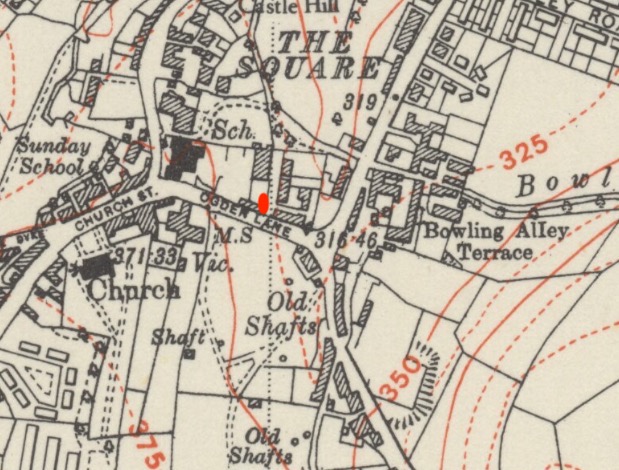The First Branch Library at Rastrick
This is the story of how the Rastrick Library came into being. It started with humble beginnings at the Ogden Lane Council Offices and finished up in the magnificent building on Crowtrees Lane that has been its home for over 100 years.
Our thanks go to John Sheppard of Rastrick, a member of the Rastrick Local History Group & Friends of Rastrick Library, who has researched the subject.
Brighouse Council, which was incorporated in 1893, soon established a library in The Rydings. Councillor Arthur Travis Clay, of Rastrick, gave himself the credit for having first broached to colleagues on the Library and Museum Committee the project to establish a branch library in Rastrick. There was some resistance to this idea as it was evidently felt likely to be an expensive white elephant. However, in June 1900 it was resolved that the Borough Librarian visit the Barnsley British Co-operative Society and report at the next meeting on their system of working branch libraries.
On receipt of the librarian’s report it was decided that a scheme for working a branch library at Rastrick should be considered. A committee, comprising the Mayor (John William Clay), Councillors Arthur Travis Clay and Dennis Hardaker, and Messrs G. S. Sowden, William Taylor and Charles Wood, reported in December 1900. The committee recommended:
(1) that a Branch Library be opened at the Ogden Lane Offices [the former Rastrick Local Board offices] on two nights per week, viz. Monday and Friday, from 6.30 to 8.30pm
(2) that the cost of the books and necessary fittings (which they estimated would not exceed £30) be defrayed out of the present year’s revenue, and
(3) that the sum of £20 be allowed in the estimate of the next year for the maintenance and renewal of books from the Branch. It was also suggested that the Branch be open for one year as an experiment.
James Arthur Wroe, the Borough Librarian, would seem to have been largely in favour of the comittee’s recommendations, though he did note that a good portion of current stock at The Rydings was bought second-hand, that many books, chiefly fiction, were not worth re-binding and that these when worn out would have to be replaced, “which is a contingency we should bear in mind.” He also noted that many towns such as Huddersfield, population 95,400, and Rochdale, population 71,401 had not seen their way to adopt branch libraries.
The Committee’s recommendations were approved by Council and the rate estimates for the year to 31 March 1902 included £20 for the Rastrick Branch Library. Councillor Brewer’s amendment that ratepayers should have “the privilege of ordering books from the Rydings and the same be brought to the Branch Library” was, however, heavily defeated.
The Branch Library was officially opened by the Mayor on 6 March 1901. He declared himself to have been initially opposed to the idea of a branch, feeling that residents would be able to secure a much more satisfactory selection of books in the Rydings than any branch could hope to provide at the present time. However, he had reversed his position when it became apparent that there was a great desire at the top end of Rastrick. His remarks included the comment that, on looking at the shelves before him he noted that the volumes were very small in number, but, as had already been pointed out, the scheme was only a tentative sort of thing, and he had no doubt that the Committee would be guided as to their future action by the conduct of the people who used the Library. If a proper appreciation was shown he had no doubt that before many months had elapsed the shelves would be quite filled. Councillor A.T. Clay concluded the ceremony by appealing for gifts of books which were worthy of a place on the shelves of the Free Library.
The Librarian’s monthy report on 15 April noted that already the total number of borrowers enrolled was 115, of which 80 were new members, the other 35 having transferred from the Rydings. There was a total of 253 volumes, including 42 non-fiction works. The issuing of books was running at 211, ie average issue 30 per night. Subsequent monthly reports recorded increasing use and by 30 June 1901 1330 books had been issued.
The experiment was evidently judged a success and application was quickly made for the Carnegie Trust to fund the provision of purpose-built premises in Rastrick. Unfortunately this was not agreed by the Trust. The enthusiasm of Rastrick councillors did not abate and as the Council could not see its way to funding a purpose-built library, Aldermen John William Clay and William Smith donated, respectively, land and the cost of building a library in part of the Clay family’s Crowtrees House land. The Ogden Lane Branch (shown with an orange mark on the below map) remained open until it was replaced in 1912 by our present Library.
